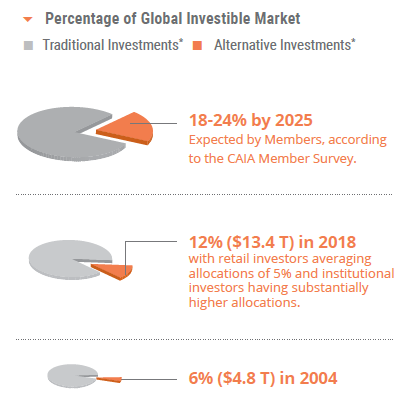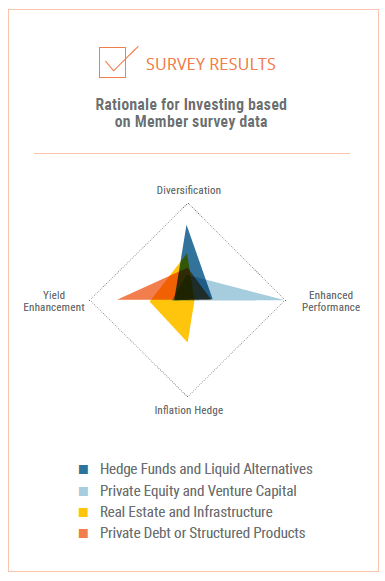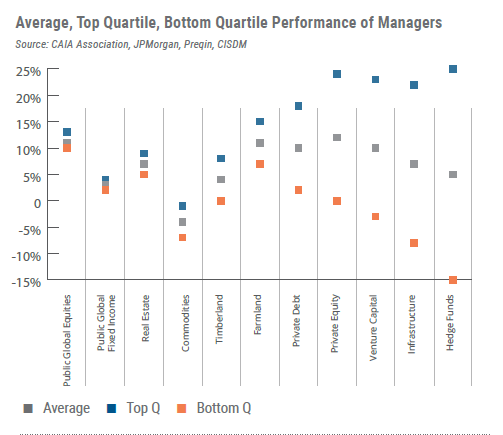As we enter a new decade, rife with a global pandemic, the most violent bear market in history, and unprecedented uncertainty, alternative investments continue to be a polarizing topic. Yet, further growth in alternatives is expected. Our report covers three important topics: the meteoric rise, current state, and outlook of alternative investments; a deep dive into the growth drivers of the underlying industries and asset classes; and a four-point call to action for the industry that will become our rallying cry in the coming years.
Here are some of the highlights:
From Then to Now: A 15-Year Lookback
Highlights:
- How alternative investments doubled their global market share between 2003 and 2018
- Why record lows in global interest rates have driven pensions toward alternative investments
Why Alternative Investments?
Highlights:
- CAIA Member rationales for investing in alternative asset classes
- How alternative assets classes can help responsible investors reap the long-term benefits of both risk mitigation and return enhancement
- Why value creation continues to shift from public markets to private markets
The Future of Institutional Alternatives
Highlights:
- Why performance dispersion among managers of alts will make manager due diligence increasingly important
- The growing popularity of co-investments and the accumulation of dry powder in private equity
- Major trends in private debt stemming from regulatory changes and an ongoing low-interest rate environment
- Expectations for hedge fund outperformance during times of weakening stock prices and the anticipated growth of liquid alts
- The impact of ESG integration on real assets investing
Our Call to Action
CAIA Association is taking the lead with a call to action for our Members and the broader industry. With our four-point agenda below, we hope to change our industry to benefit future generations of workers and savers.
- Commit to Education
- Embrace Transparency
- Advocate for Diversification
- Democratize but Protect





